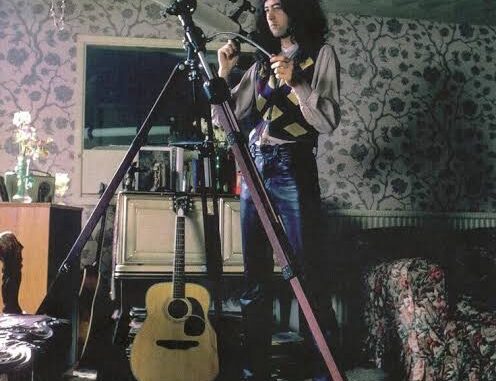
In the summer of 1968, Jimmy Page found himself in a place of unusual inspiration — a houseboat anchored along the Thames River in Pangbourne, England. It was there, in the quiet ripples of the river and the creative stillness of his temporary home, that one of rock’s most iconic riffs was born. Sitting with his guitar, Page crafted the seismic opening to what would become “Whole Lotta Love,” a riff so powerful that it didn’t just set the tone for the song — it became its heartbeat.
Page later reflected on the moment with clarity: “I suppose my early love for big intros by rockabilly guitarists was an inspiration, but as soon as I developed the riff, I knew it was strong enough to drive the entire song, not just open it.” That sense of strength and inevitability was something that coursed through much of Led Zeppelin’s early work, and “Whole Lotta Love” stood as a towering testament to their raw, untamed energy.
When Page later moved from the houseboat into his riverside home in Pangbourne, the creativity only deepened. The house itself, filled with a particular kind of restless energy, became a catalyst for the music that would define the band’s explosive ascent. It was within those walls that “Whole Lotta Love” and “What Is and What Should Never Be” were first routined — shaped and sharpened during long, electrified rehearsals.
Several weeks after first conceiving the riff, Page gathered the rest of the band — Robert Plant, John Paul Jones, and John Bonham — into his Pangbourne living room. When he played the riff, the reaction was immediate and electric. “The excitement was immediate and collective,” Page recalled. “We felt the riff was addictive, like a forbidden thing.”
That “forbidden” quality became a signature of Led Zeppelin’s music — daring, sensual, and unapologetically intense. “Whole Lotta Love” would go on to become not just one of their defining songs, but a cornerstone of rock history, with Page’s riff ranked among the greatest ever recorded.
In that riverside house, amidst the hum of the Thames and the pulse of youthful ambition, Jimmy Page helped lay the foundation for a new musical revolution — one thunderous riff at a time.
Leave a Reply